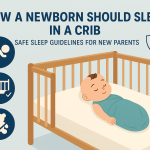Sleep is essential for our physical and mental well-being. However, millions of people struggle with sleep disorders that affect their daily lives. When symptoms point toward conditions like sleep apnea, insomnia, restless legs syndrome, or narcolepsy, a doctor may recommend a sleep study—also called a polysomnogram. But how are sleep studies performed, and what should you expect during the process? This article provides a comprehensive, step-by-step guide to sleep studies, from preparation to diagnosis.
What Is a Sleep Study?
A sleep study is a non-invasive medical test that monitors your body while you sleep, collecting valuable information about your sleep stages, breathing, brain activity, heart rate, and other vital functions. The main goal is to diagnose sleep disorders that may be affecting your health and quality of life.
There are different types of sleep studies, but the two most common are:
- Polysomnography (PSG): Conducted overnight in a sleep lab under medical supervision, this is the gold standard for sleep diagnostics.
- Home Sleep Apnea Test (HSAT): A simplified version of PSG, done at home, mainly used to detect obstructive sleep apnea.
Why Are Sleep Studies Performed?
Your doctor may recommend a sleep study if you experience:
- Excessive daytime sleepiness
- Loud, chronic snoring
- Pauses in breathing during sleep (witnessed apneas)
- Unexplained insomnia or difficulty staying asleep
- Unusual movements or behaviors during sleep
- Unexplained daytime fatigue or concentration problems
Sleep studies help diagnose conditions such as:
- Obstructive sleep apnea (OSA)
- Central sleep apnea
- Insomnia
- Periodic limb movement disorder
- Restless legs syndrome
- Narcolepsy
- REM sleep behavior disorder
The Sleep Study Process: Step by Step
Understanding how sleep studies are performed can help relieve any anxiety and prepare you for the experience. Here’s a detailed breakdown of the typical process.
1. Pre-Study Preparation
- Medical Consultation: Your doctor will review your symptoms, medical history, and medications to determine the most appropriate sleep test.
- Instructions: You’ll receive specific instructions, such as avoiding caffeine or alcohol before the study, and guidance on medications to take or pause.
- Packing for the Lab: If your test is in a sleep center, bring comfortable sleepwear, toiletries, and any items (such as a book or pillow) that help you relax.
For a home sleep test, you’ll receive a portable kit with instructions for setup.
2. Arrival and Setup (Sleep Lab Studies)
- Arrival: You’ll typically arrive at the sleep center in the evening, a few hours before your normal bedtime.
- Private Room: Sleep labs provide private or semi-private rooms with a bed, bathroom, and sometimes entertainment options.
- Technician Setup: A sleep technologist will greet you, explain the procedure, and begin attaching sensors to your body.
- Sensor Attachment: Sensors are applied using adhesives or gentle straps to track:
- Brain waves (EEG) – via scalp electrodes
- Eye movements (EOG)
- Chin muscle activity (EMG)
- Heart rate (ECG)
- Breathing effort (chest and abdomen belts)
- Airflow (under the nose)
- Oxygen levels (finger probe)
- Leg movements (leg electrodes)
- Comfort Check: The technician ensures all sensors are secure but not uncomfortable, and you can move, turn, or get up if needed.
3. The Overnight Sleep Study
- Monitoring Begins: After setup, you may read or relax until your typical bedtime. The technologist monitors you from a nearby station, watching for any issues or requests for assistance.
- Lights Out: When you’re ready, the technician will ask you to lie down, turn off the lights, and attempt to sleep as you normally would.
- Continuous Observation: The system records your sleep parameters throughout the night, capturing data on breathing, heart rate, oxygen, movements, and sleep cycles.
- Video & Audio Recording: Many labs record video and audio to identify abnormal behaviors, snoring, or movement disorders.
- Technician Support: If you need to use the restroom or experience discomfort, you can alert the technician for assistance at any time.
4. Morning Wake-Up and Sensor Removal
- Wake-Up: In the morning, the technician will gently wake you at a prearranged time, usually around 6-7 a.m.
- Sensor Removal: The sensors and electrodes are removed, and you can freshen up before leaving the lab.
- Feedback: The technician will not interpret the results but can answer general questions about the process.
5. Data Analysis and Results
- Data Review: A sleep specialist physician reviews the recorded data, analyzing your sleep stages, breathing patterns, heart rhythms, leg movements, and any abnormalities.
- Diagnosis: Based on the findings, your doctor will provide a diagnosis and discuss treatment options if a sleep disorder is identified.
- Follow-Up: A follow-up appointment is scheduled to review your results and discuss next steps, whether it’s therapy, device use (like CPAP), medication, or additional testing.
How Do Home Sleep Studies Differ?
Home sleep apnea tests (HSATs) are designed for convenience and primarily screen for obstructive sleep apnea. Here’s how they differ from in-lab studies:
- Fewer sensors (mainly airflow, breathing effort, and oxygen)
- No EEG, so they can’t assess sleep stages
- Instructions provided for self-application of sensors
- You sleep in your own bed, then return the device for data analysis
- Not suitable for diagnosing all sleep disorders
Home tests are less comprehensive, but they offer a comfortable, accessible option for many patients.
Is a Sleep Study Uncomfortable or Risky?
Sleep studies are safe, non-invasive, and generally well-tolerated. The most common inconvenience is adjusting to sleeping with sensors. Some people may have difficulty falling asleep in a new environment, but the data collected is usually valid even with less sleep than normal.
There are no significant risks, but mild skin irritation can occur from adhesives or tape.
What Happens After a Sleep Study?
After your study:
- Your data is scored and analyzed by a sleep technologist and interpreted by a sleep doctor
- Your doctor reviews the findings and explains your diagnosis
- If a sleep disorder is diagnosed, treatment may include:
- CPAP therapy (for sleep apnea)
- Medications
- Lifestyle changes
- Further testing (for complex cases)
- Follow-up appointments track your progress and adjust your treatment as needed
Tips to Make Your Sleep Study Easier
- Follow all pre-study instructions from your doctor or sleep center
- Pack comfortable clothes and personal items
- Inform the staff of any concerns or special needs in advance
- Try to relax—sleep centers are designed for comfort and support
- Let your technician know if you’re uncomfortable at any time
Conclusion
Understanding how sleep studies are performed can help you approach this important diagnostic test with confidence. Whether done in a sleep lab or at home, sleep studies are safe, effective tools for uncovering the root of sleep problems and guiding you toward better rest and health. If you or a loved one are struggling with sleep, talk to your healthcare provider today about whether a sleep study is right for you.


